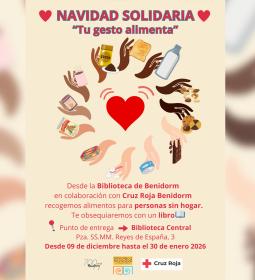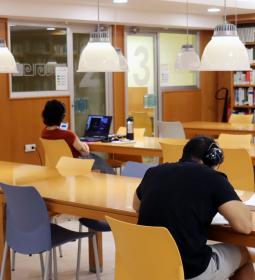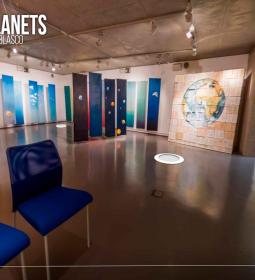In the old House of the road workers, restored, hosts the exhibition of a plan that recovers the historical toponymy of the area
Benidorm's history through the toponymic map of Serra Gelada, in the Espai d'Art 'La Casilla'

Benidorm already has a new meeting point aimed at promoting and disseminating culture. Last night, the Espai d'Art 'La Casilla' opened its doors, located in the old 'Casa de Peones Camineros', on Vía Emilio Ortuño, recently restored by the City Council, with the exhibition 'Fent el plànol toponymic de Serra Gelada and Penyes de l'Albir'. An exhibition promoted by the Department of Historical and Cultural Heritage with the collaboration of the Hydrographic Commission and Taula del Bon Profit.
The exhibition reflects the process of elaboration of the toponymic map of this important enclave published by the City Council last November coordinated by the professor of Artistic Photography of the School of Superior Art of Design of Valencia, Jaume Fuster. A research and artistic work that has had the support of Taula del Bon Profit and that has been reflected in a toponymic map made by Frances Aracil, head of the Department of Expression and Representation also the School of Superior Art of Design.
The mayor of Benidorm and president of the Alicante Provincial Council, collaborator in the restoration of 'La Casilla', Toni Pérez, welcomed the hundred or so citizens who attended the event; together with the person in charge of the Historical Heritage area, Ana Pellicer; Jaume Fuster and Francesc Xavier Llorca Ibi, both members of Taula del Bon Profit, the latter a professor at the Faculty of Education at the University of Alicante, an expert in geography and local toponymy. Likewise, the regional deputy José Ramón González de Zárate was present along with other members of the Municipal Corporation.
Toni Pérez pointed out that "many of the things that appear on the map would have been lost forever" if this research work that makes up "the historical account" of Benidorm and its region had not been carried out.
The mayor emphasized the "need for knowledge" to "preserve our history" and, referring to the Serra Gelada enclave, noted that they are there "for us to enjoy and the more we know about them, the more we will protect them."
For her part, Ana Pellicer succinctly detailed the story of the restoration process of the new Espai d'Art 'La Casilla' that began in 2018 with the first reports. “Five years of work – she said – that have borne fruit in a space dedicated to getting to know our town” and she valued the cartographic and toponymic research carried out that has been reflected in the exhibition of “unique pieces of our history”.
As project coordinator, Jaume Fuster clarified that "errors" were detected in the previous plans, some of which date from the 17th century, and that, during the research process, "they were located correctly." Likewise, he vindicated the good work of Francesc Aracil who "for seven months" drew the plan following "the style of the time".
Among the more than 40 geological maps and scientific elements in the exhibition, he highlighted the presence of a machine "to extract the oceanic profile of the sea", or a peseta from 1870, which "is what the map would have cost at the time". Fuster elaborated on the knowledge provided by Llorca Ibi who wrote his doctoral thesis on the toponymy of Benidorm and his commitment "to the search for the sources to know our Serra Gelada".
Precisely, Francesc Llorca Ibi, the last to intervene, estimated at "around 250" place names detected in the area "more than 200 words that indicate human presence." They all have Valencian roots. Only l'Albir "which in Arabic means well" is of Arab origin, which shows that the territory "was a war zone, a trench" subjected to the ups and downs of war.
Among the details, Llorca Ibi recalled that King Joan II signed an edict by which, whoever moved to Benidorm and lived here for ten years "everything would be forgiven, including crimes against the crown." He revealed the presence of sea lions "until the 50s of the last century", as evidenced by the one known as 'Cova del loop on the island, or that 'cove' means "place where you can disembark".
Many of those attending this first exhibition at the Espai d'Art 'La Casilla' had lived in the old Casa de Peones Camineros. The one in Benidorm is one of those that have been happily restored and put back at the service of the public. Emotional moments were experienced among the attendees when they shared the black and white images from the late fifties to the seventies of the last century when the Benidorm of today was beginning to take shape.










